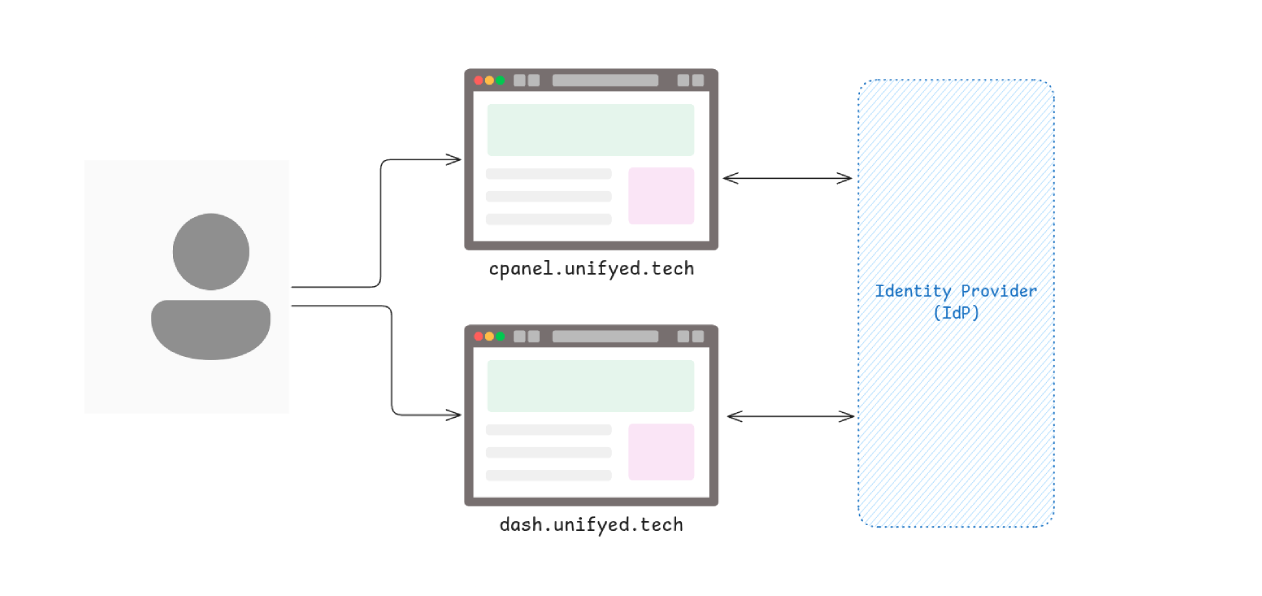Problem
Users hate logging in multiple times. You have cpanel.unifyed.tech, dash.unifyed.tech and few more apps - but each asking for separate login? That's bad UX.
Solution Architecture
One auth domain (auth.unifyed.tech) issues JWT tokens. All subdomains trust this token via shared cookies.
The Flow
- User hits
cpanel.unifyed.tech/dashboard - App checks for
authTokencookie - No cookie? Redirect to
auth.unifyed.tech/login?redirect=cpanel.unifyed.tech/dashboard - User logs in → server sets cookie on
Domain=.unifyed.tech - Redirect back to original app → now user is authenticated everywhere
const token = getCookie("authToken");
if (!token) {
window.location.href = `https://auth.unifyed.tech/login?redirect=${encodeURIComponent(
currentURL
)}`;
}
This is the core trick - we set JWT in a cookie with these flags
document.cookie = `authToken=${token}; Domain=.unifyed.tech; Path=/; Secure; HttpOnly; SameSite=None`;
Security Stuff
Always validate redirect URLs against whitelist
const allowedDomains = /^https?:\/\/[^\/]+\.unifyed\.tech/;
if (!allowedDomains.test(redirectUrl)) {
throw new Error("Invalid redirect");
}
Each app validates JWT server-side on every request
app.get("/api/validate-token", (req, res) => {
const token = req.cookies.authToken;
const user = jwt.verify(token, SECRET_KEY);
res.json({ user });
});
Logout Everywhere
When user logs out from any app we need to clear session from all tabs:
document.cookie = "authToken=; Domain=.unifyed.tech; Path=/; Max-Age=0";
const bc = new BroadcastChannel("auth");
bc.postMessage({ cmd: "logout" });
bc.onmessage = (event) => {
if (event.data?.cmd === "logout") {
handleLogout();
}
};
Final Thoughts
This SSO implementation gives you enterprise-level user experience without the enterprise complexity. Users login once and access everything - exactly what SSO should do.
The beauty is in simplicity. One auth domain, shared cookies and proper validation. That's it.
Perfect for mid-size applications who want proper SSO without dealing with Okta pricing or SAML complexity.

